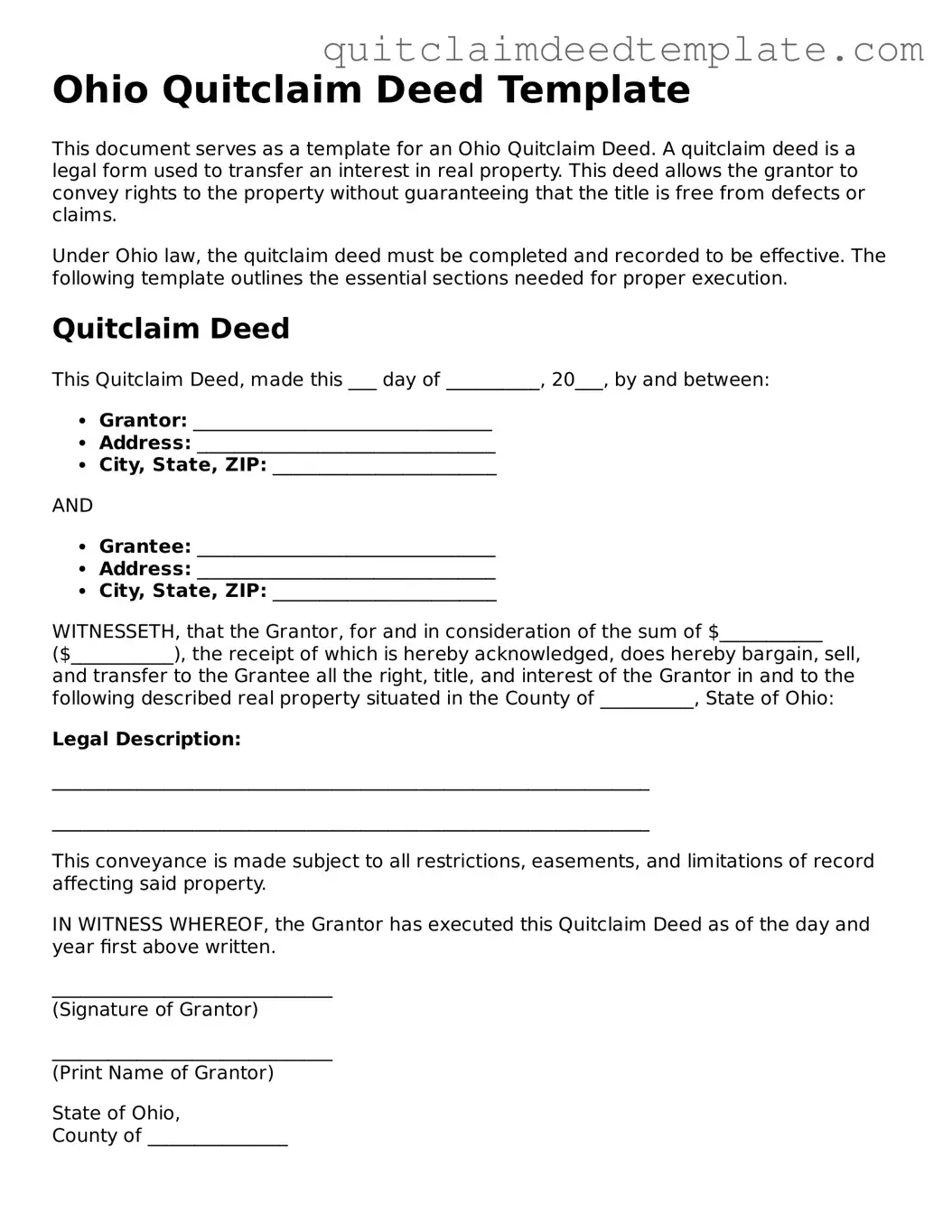Documents used along the form
When transferring property ownership in Ohio, a Quitclaim Deed is often accompanied by several other important documents. These documents help clarify the transaction, ensure compliance with state laws, and protect the interests of all parties involved. Below is a list of commonly used forms and documents that are associated with the Quitclaim Deed.
- Property Transfer Tax Affidavit: This document is required to report the transfer of property and assess any applicable transfer taxes. It provides the county auditor with necessary information about the transaction.
- Title Search Report: A title search report details the history of the property title, including any liens or encumbrances. This helps ensure that the seller has the right to transfer ownership and that the buyer is aware of any potential issues.
- Affidavit of Title: This sworn statement is provided by the seller to affirm their ownership of the property and to disclose any known claims or issues. It serves as a declaration of the seller's legal standing.
- Purchase Agreement: This document outlines the terms of the sale, including the purchase price and any contingencies. It acts as a binding contract between the buyer and seller before the Quitclaim Deed is executed.
- Closing Statement: This statement summarizes all financial aspects of the transaction, including fees, taxes, and the final sale price. It ensures that both parties are aware of the total costs involved in the transfer.
- Power of Attorney: In cases where one party cannot be present to sign the Quitclaim Deed, a Power of Attorney allows another individual to act on their behalf. This document must be executed prior to the transaction.
- Notice of Completion: This document may be filed after the transfer to officially notify interested parties that the transaction has been completed. It helps maintain accurate public records.
- Warranty Deed (if applicable): Sometimes, a Warranty Deed may be used in conjunction with a Quitclaim Deed to provide additional assurances about the title. This document guarantees that the seller holds clear title to the property.
These documents collectively facilitate a smoother property transfer process. Each plays a crucial role in ensuring that both parties are protected and that the transaction adheres to Ohio's legal requirements. Understanding each document's purpose can help individuals navigate the complexities of property ownership transfers more effectively.
